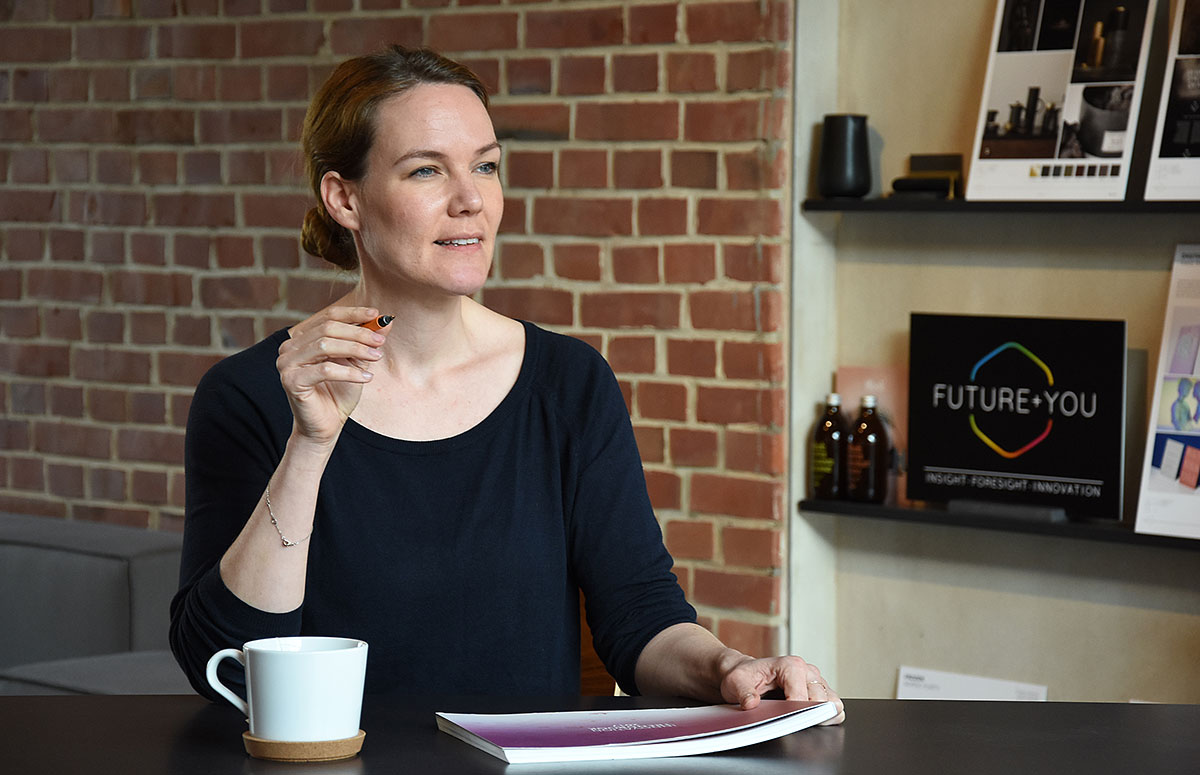Let there be light - by itself
Can lights be turned on without flicking a switch? Nimbus shows how this can be done in a very smart way in the new building for the Neckar-Fils regional group of Südwestmetall in Esslingen, southern Germany. Throughout the building, lights are activated independently – and only when they are needed. This is made possible by a wireless network of LED lights with innovative lighting control.

The lighting with LED project lights ensures the right lighting mood. Photo: Dieter Blum
Not far from Stuttgart, in the booming central Neckar region, the new building for the Neckar-Fils regional group of Südwestmetall is located between the railway line, road and steep vineyard terraces. Taking into account these specific conditions, fritzen 28, a local firm of architects, succeeded in implementing an autonomous architectural and energy concept and realising the client’s requirements for a transparent, open building.

The liberation of fixed electrical installations makes organisational changes or conversions of rooms easier and cheaper. Photo: Nicolay Kazakov
The lighting technology installed also contributes to the ingenious temperature control system. It is based entirely on LED lights with a power requirement equivalent of only six watts per square metre of floor space; a value that is also achieved as a result of the lighting control being usage-based and daylight-dependent. The luminaires and lighting control system were both provided by the Stuttgart-based LED pioneer Nimbus.
Light without electrical installations
In the atrium, the round discs from the Modul R Project range, suspended throughout the full height of the open part of the complex, provide well-balanced illumination. The system uses light sensors, which ensure that the luminous intensity is adjusted to suit the level of available daylight – a process which is decentralised for individual groups of luminaires. The controls for the wireless networking system “Wireless IQ” are based on the Zigbee standard.

The light-flooded atrium with the suspended Modul R Project lights from below. The pendulum structures are special lights. Photo: Martin Duckek
Thanks to Wireless IQ, there is no need for traditional light switches and cables. This freedom from fixed electrical installations makes changes in organisation or conversions easier and cheaper. But the building is not entirely switch-free. In the conference rooms, switches are used to obtain different lighting scenarios according to usage or presentation requirements. But even these switches are based on the Zigbee wireless standard and need no fixed electrical installation. However, the benefits of this innovative technology are particularly evident in the offices.
When a person enters the room, the light is automatically triggered via the presence sensor built in to the Modul Q project ceiling lights. The ceiling lights are then immediately activated and at the same time pass on a signal via Wireless IQ to the Force One Power floor lamp by the workstation, which comes on at 50 per cent power. When the employee approaches the floor lamp, it brightens to an individually set light level. Furthermore, the ceiling lights can be combined into so-called virtual groups or light clouds according to requirement and usage profiles. The sensor on the floor lamp also responds automatically to changing daylight and adjusts the ceiling lights at the same time. However, employees are still able to make individual modifications using sensor buttons on the floor lamp at any time. In this case, too, the ceiling lights follow the new values.
Energy efficiency, comfort, flexibility and simple control technology were not the only key factors for the architects and their clients when choosing the LED lights from Nimbus. “Shape was also important to us”, explains Katrin Kussina from fritzen 28. “First, the flat light fittings were ideally suited to our principle of layers and, secondly, we were able to keep the design language consistent throughout the entire building”. The architectural concept is based on the principle of horizontal layering: the layout of each floor is a different shape, with indentations in some places and projections elsewhere. “This corresponds to the neighbouring vineyards”, adds Hansjörg Schwarz of fritzen 28. The energetic and amorphous flow of one floor into the next is only relaxed towards the east to form a prospective space situation; apart from that “no two corners lie directly above each other.”







